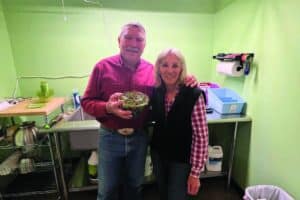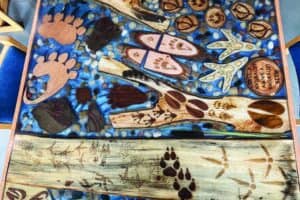According to “Colorado’s Poisonous Menace,” a pamphlet prepared by the Colorado Department of Agriculture, plants that are poisonous to horses grow abundantly in Colorado. Many of these toxic plants grow in the Falcon area, especially in soil that has been disturbed by; for example, trenching, house construction or road construction.Steele credited Dr. Anthony Knight, a Colorado State University veterinarian and author of “Guide to Poisonous Plants,” as the authority on Colorado’s toxic plants.In addition to being toxic, these plants, as well as noxious plants, crowd out the good grass in a pasture, said Ruth Ann Steele, coordinator of the Black Forest Slash and Mulch program. Steele said horses generally ignore toxic plants if they have other nutritious food to eat.Here are some of the toxic plants to watch out for in the Falcon area:Tansy ragwortThis plant is toxic to cattle as well as horses. It also is known as groundsel and senecio jacobea. The senecio species, which has about 70 members -are all toxic to varying degrees, Steele said.Tansy ragwort is known to be in the Ellicott area. “Every couple of years, we hear that a horse died from eating it,” Steele said, adding that the highly toxic senecio riddellii is also present in El Paso County.The plant has bunches of small, yellow flowers, with petals in a ray pattern, atop a few tall stalks. The leaves are bright green and curly.According to “Guide to Poisonous Plants,” tansy ragwort induces severe, irreversible liver disease. Symptoms include diarrhea, marked weight loss, circling, aimless wandering, excessive tearing, photosensitivity (where skin exposed to sunlight becomes red, swollen and painful), swollen, red eyes, red urine and yellow coloration of mucous membranes.Russian knapweedThis invasive plant from Russia only affects horses.It has small purple or white flowers bunched on top of 2-to-3-foot tall stalks. The roots are black. New leaves and stems are covered with gray hairs. Russian knapweed can be distinguished from other knapweeds by its soft, velvety bud, Steele said.According to “Guide to Poisonous Plants,” eating Russian knapweed causes permanent lesions in specific areas of the brain that cause freezing of the facial muscles, excess salivation and inability to chew or drink, resulting in starvation.Yellow starthistleYellow starthistle is an invasive plant having yellow flowers surrounded by one-inch spines at the ends of branches up to 3 feet tall.It contains the same toxin as Russian knapweed, so the symptoms are similar.According to “Guide to Poisonous Plants,” horses like the taste of yellow starthistle.HoundstongueIn its first year, this invasive plant from Eurasia has leaves shaped like a dog’s tongue. In the second year, the stems grow to a height of 4 feet, with reddish-purple flowers along the stem.According to “Guide to Poisonous Plants,” houndstongue is toxic to livestock in general. Eating it causes liver disease, resulting in weight loss; excessive yawning, photosensitivity, jaundice and red urine.LocoweedAccording to “Colorado’s Poisonous Menace,” Colorado has three types of locoweed – purple, white and woolly.Locoweed causes brain lesions in cattle, sheep, horses and deer and elk; resulting in weight loss, fetal deaths, birth defects, sudden changes in temperament, depression, excessive sleeping and violent reactions to ordinary routines.Animals learn to eat locoweed from each other. The toxic component of locoweed also is transferred through nursing animals.”Locoweed tastes like alfalfa, and once horses get a taste of it, they’ll keep eating it,” Steele said.Sand and fringed sageSand sage grows to a height of 4 feet and has woody stems and silvery-green leaves. Fringed sage is a bluish-gray, low-growing shrub.According to “Guide to Poisonous Plants,” both sage species are toxic to horses, but not to cattle, sheep, goats or wildlife under normal grazing conditions. Horses can eat small amounts of sage without problems. Poisoning occurs when sage becomes the sole source of food, such as in the winter when it is the only forage protruding above the snow.Symptoms of sage poisoning are similar to locoweed poisoning and include the smell of sage in the horse’s breath and feces.Horses tend to recover in one to two weeks after they stop eating sage and then fed a nutritious diet.Other problem plants
- Canada thistle, which absorbs nitrates and sulfates that are toxic in large amounts
- Jimson weed, which affects cattle, sheep, goats, horses, pigs, poultry and people
- Gum weed, penstemon, prince’s plume, saltbush, woody aster and certain species of milkvetch: These plants accumulate selenium. When ingested, selenium replaces the sulfur found in keratin, the primary protein in hoof and hair, leading to crippling hoof problems.






